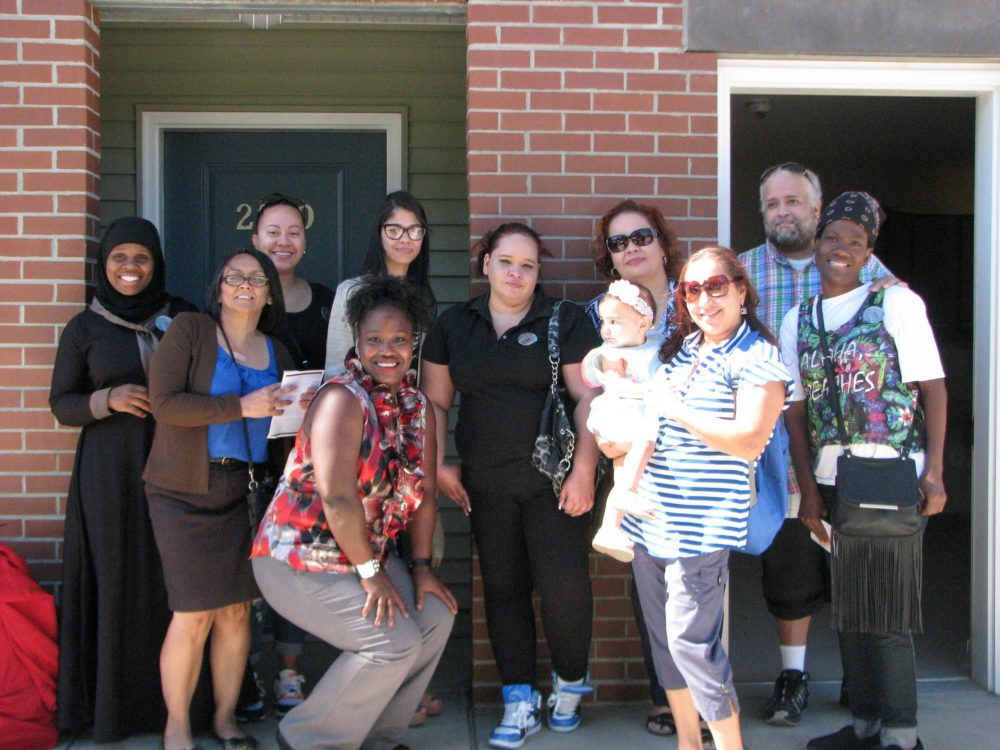
The first Community Justice Land Trust tenants at Grace Townhomes. Photo courtesy of DHCD
Long before we knew what a community land trust (CLT) was, residents in a North Philadelphia neighborhood started noticing significant changes in our community. Vacant land, the result of disinvestment decades prior, was starting to disappear and be replaced by market-rate and luxury housing. Organizations that are deeply rooted in the neighborhood, like the Women’s Community Revitalization Project (WCRP), started talking about the changes we were witnessing and decided to join together to understand the problem and identify solutions. We did research that showed that 1 in 4 parcels of land was vacant and that in only 6 years, housing costs skyrocketed from an average of $40,000 to upwards of $200,000 a home. Together we conducted a listening project—asking questions of our friends, neighbors, family, and anyone who lived, worked, or worshipped in the neighborhood. We asked about the impacts of vacant land and the neighborhood change, what they were worried about, and what hopes they had.
Overwhelmingly our neighbors and neighborhood institutions said they wanted to put the power of the land back into the hands of the community. The way we decided to do this was to create the Community Justice Land Trust and ensure neighborhood residents and tenants of CLT homes had seats on its board.
We defined community as the people who live, work, or worship in a neighborhood and are affected by rising real estate costs. Our CLT board is composed of community residents and leaders of neighborhood organizations, tenants of CLT units, WCRP representatives, and resource people (bankers, lawyers, etc.). We focus on engaging people who would be potential residents of our CLT homes, primarily low-income people of color, and identify potential board members through one-on-one conversations. The board helped create our ground lease, kept our focus on renters making 30 percent of AMI or below, and helped us make decisions to expand to new neighborhoods that share our vision. The board will determine if and when we expand from rental housing to homeownership and determine if we will ever develop housing for people over 30 percent AMI. These determinations are often left in the hands of developers and are made with the market exclusively in mind. We created our CLT so that people can afford to stay in the communities they call home.


Comments